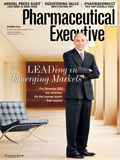How Can We Fix the FDA?
How can we better balance addressing medical needs with ensuring that new drugs are safe and effective? Ron Cohen reports.
The Food & Drug Administration made a propitious start for this New Year. Right on deadline, the agency produced recommendations for the Prescription Drug User Fee Act (PDUFA) and two programs governing the fees the biomedical industry pays to fund the regulation of prescription drugs, generics, and biologics. FDA stayed in the spotlight last month when Commissioner Margaret Hamburg testified before Congress.

Ron Cohen
The next series of hurdles is unlikely to be as propitious. Hamburg and her staff must begin to fix a drug approval process many patients, doctors, drug developers, and investors—even regulators—consider to be in need of repair. Inefficiency at this agency has profound consequences: foremost to public health, and also to our country's ability to maintain our global leadership in drug development.
Let me be clear: The problems I'm discussing have nothing to do with the work ethic or talent at FDA. To the contrary, I've dealt with dozens of smart, hard-working staff members there over the years who are dedicated to improving public health. But even with the best intentions, regulators are stymied by deeply flawed processes and systems. To name a few:
No fixed term at the top. FDA has had five commissioners in the past 10 years alone. How can we expect effective leadership when the commissioner changes every couple of years, subject to political whims? A fixed term of, say, six years, would go a long way to correcting this flaw.
Seemingly capricious decision-making. Too many companies developing new drugs run aground when the rules change or the goal posts shift at the eleventh hour. In 2006, the FDA surprised three companies presenting at an advisory committee meeting on their antibiotics for bacterial sinusitis or community-acquired pneumonia. The companies had spent millions of dollars and years of effort on their clinical trials based on previously accepted standards—and now, the standards have changed. All of the drugs were rejected and all three companies went out of business.
Poor communication. Even when a procedural change is legitimate, information often fails to reach companies with drugs under review. It is also difficult to have any informal exchanges with FDA, so that even questions that might readily be addressed in a phone call can require months of waiting for a formal meeting or conference call to be scheduled. Meanwhile, drug development programs languish.
Excessive risk-aversion. All stakeholders in healthcare agree that patient safety is paramount. But the balance of benefit versus risk at the FDA has moved dramatically toward risk aversion. No surprise here. With the media sensationalizing the risks not just of medications but of everything from drinking water to tricycles, and Congress grilling FDA staffers repeatedly before the cameras, regulators have received a clear message: the safest route is to heap on new requirements and delay approvals. Yet the risks of delaying patient access to drugs that might help them are not taken into account.
Narrow application of accelerated approval. FDA has the ability to speed approval of new medications that address serious conditions with unmet medical needs. However, accelerated approval has been applied primarily to drugs for HIV and cancer, while many other serious conditions don't benefit from this process.
Too little patient input. Congress often hears from patients desperate to see new drugs approved, but their voices don't carry significant weight in the review process.
No advocacy for innovation. The U.S. has the world's most nimble infrastructure for medical advancements, but at FDA there is no mandate to promote innovation. FDA's mission statement should highlight the importance of innovation, and a Chief Innovation Officer should be appointed to ensure that FDA processes take this into account.
Industry Gripes
Biotech companies have grown increasingly alarmed by the impact of these regulatory shortcomings. A survey of biomedical CEOs in California released last month shows that eight in 10 CEOs believe the FDA approval process is slowing growth of their companies and threatens growth in the medical technology sector. Three-quarters of those surveyed said problems at the agency place U.S. biomedical leadership in jeopardy.
Another influential constituency is voting with its feet: venture capitalists who, historically, have funded small companies developing many of the most promising experimental drugs. Last fall, the National Venture Capital Association (NVCA) and its partner organization, the Medical Innovation and Competitiveness Coalition, released a survey of 156 VC firms that account for about $10 billion in venture backing for medical startups. Thirty-nine percent said they had cut spending on life sciences in recent years, and another 39 percent expected to do so in the future. Asked why, nearly two-thirds of companies cited regulatory uncertainty and risk-aversion at FDA. Eighty-six percent said that, in coming years, first commercialization of some products they backed would occur in other countries.
It's also troubling that many respondents said they expected to see investments in treatments for diabetes and obesity plummet. These are two of the biggest contributors to healthcare costs, morbidities, and death in this country. Yet it's easy to see why investors would head for the exits. FDA has rejected three obesity drugs in the past six years, one of which was recommended by the agency's own advisory panel. At the same time, FDA has markedly increased the requirements for demonstrating cardiovascular safety of new drugs for diabetes.
What are the Solutions?
How can we achieve a better balance between addressing medical needs and ensuring that new drugs are both safe and effective? A new mechanism is required, but what shape should it take? Accelerated approval offers a useful paradigm. First implemented in the 1980s to speed HIV drugs to market, this regulatory approach acknowledges that surrogate markers can reasonably predict drug efficacy, even without evidence from lengthy clinical trials. Based on success with HIV/AIDS, both Congress and cancer patient advocates demanded similar treatment for oncology drugs. Not surprisingly, the numbers of new treatments in development for cancer now far outstrip those for any other condition. This shows what the American innovation enterprise can accomplish when obstacles are lifted and the right incentives are in place.
Medical science has continued to advance on numerous fronts since the 1990s, to the point where genomics, molecular biology, and bioinformatics have provided an unprecedented understanding of the underlying biological mechanism and pathogenesis of serious diseases, in addition to HIV and cancer. It should now be possible to expand the accelerated approval pathway to include other diseases, applying strategies based on biomarkers or pharmacogenomics, predictive toxicology, clinical trial enrichment techniques, and novel clinical trial designs (such as adaptive clinical trials). As in the case of HIV and cancer, standards of safety would be preserved. In addition, drugs green-lighted in an accelerated approval pathway would be subject to more definitive clinical trials in the post-market setting, and approval would be withdrawn if these were not confirmatory.
It would be unreasonable to pin all the blame for regulatory dysfunction on FDA. Regulators are buffeted by political winds that blow hot or cold indiscriminately. Our society is at fault because we expect to live in a 'Neverland' where powerful medical interventions have no risks whatsoever. The media and our political leadership too often serve as echo chambers for our fears, and ubiquitous personal injury ads reinforce our society's insistence that no risk should go unpunished. Notwithstanding all this, most Americans would likely be shocked to learn that they have 20 or more times the risk of dying from a fall than from taking most approved medicines.
There are no secret weapons in the reform proposals I've seen that can help FDA combat misguided social expectations. Nor should regulators relax their guard on patient safety. However, the reform measures noted above might reassure investors in U.S. biotechnology and preserve this sector as the birthplace of medical breakthroughs. These measures emerged from task forces within the Biotechnology Industry Organization and were informed by lengthy discussion with a wide range of interested parties, including FDA officials, patient and pharmaceutical groups, and political leaders.
FDA has been responsive to calls for change in the past. The agency embraced accelerated approval for HIV and cancer, and was receptive to calls from the biotech industry on the need to create an ombudsman's office to serve as a liaison with drug sponsors. Robust biopharmaceutical innovation is critical to our personal health, as well as the economic health of our country. With so much riding on the outcome, it's time for all parties to leave their biases at the door and agree on innovations to optimize the regulatory process itself.
Ron Cohen is President and CEO of Acorda Therapeutics. He can be reached at rcohen@acorda.com

Pfizer, GSK Gain ACIP Recommendations for RSV and Meningococcal Vaccines
April 18th 2025The Centers for Disease Control and Prevention’s Advisory Committee on Immunization Practices voted to expand access to Pfizer’s respiratory syncytial virus vaccine Abrysvo for high-risk adults in their 50s and voted in favor of GSK’s meningococcal vaccine, Penmenvy, for streamlined adolescent protection.
Navigating Distrust: Pharma in the Age of Social Media
February 18th 2025Ian Baer, Founder and CEO of Sooth, discusses how the growing distrust in social media will impact industry marketing strategies and the relationships between pharmaceutical companies and the patients they aim to serve. He also explains dark social, how to combat misinformation, closing the trust gap, and more.